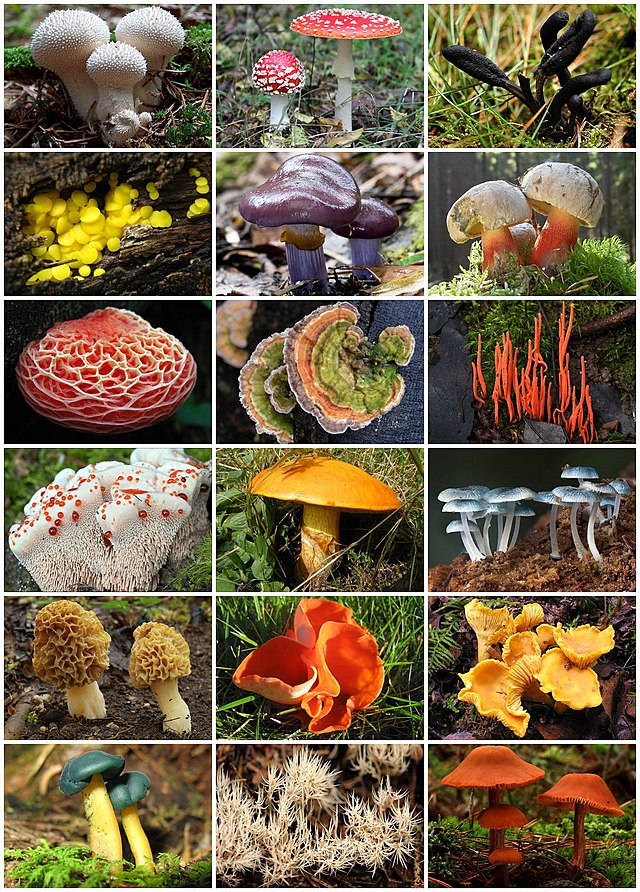Funga

Funga refers to the collective fungal life present in a particular region, ecosystem, or habitat. This term parallels "flora" (plant life) and "fauna" (animal life), recognizing fungi as a distinct and crucial component of biodiversity that deserves separate classification and study.
Definition and Scope
The term "funga" was coined to address the historical oversight of fungi in biodiversity discussions. Unlike plants and animals, fungi form their own kingdom with unique characteristics, ecological roles, and environmental requirements. The funga of any given area includes:
- Macrofungi: Visible mushrooms, bracket fungi, and other large fruiting bodies
- Microfungi: Microscopic species including yeasts, molds, and soil fungi
- Symbiotic fungi: Mycorrhizal partners, lichens, and endophytes
- Saprotrophic fungi: Decomposers that break down organic matter
- Parasitic fungi: Species that derive nutrients from living hosts
Ecological Importance
Nutrient Cycling
Fungi are primary decomposers in most ecosystems, breaking down dead organic matter and recycling nutrients back into the soil. They possess unique enzymes capable of degrading complex organic compounds like lignin and cellulose that other organisms cannot efficiently process.
Soil Health
Fungal networks, particularly mycorrhizal associations, improve soil structure, water retention, and nutrient availability. These underground networks can extend for kilometers, connecting plants and facilitating resource sharing across forest ecosystems.
Symbiotic Relationships
Many fungi form mutualistic relationships with plants:
- Mycorrhizae: Fungal root associations that enhance nutrient and water uptake
- Endophytes: Fungi living within plant tissues, often providing disease resistance
- Lichens: Composite organisms formed by fungi and algae or cyanobacteria
Role in Terraforming
Understanding and managing funga is crucial for terraforming projects:
Soil Development
Introducing appropriate fungal communities can accelerate soil formation and improve its biological activity, essential for establishing plant communities on new worlds.
Ecosystem Establishment
Fungal networks help establish stable plant communities by facilitating nutrient exchange and communication between plants, crucial for creating self-sustaining ecosystems.
Waste Processing
Fungi excel at breaking down organic waste, making them valuable for closed-loop life support systems in space habitats and early terraforming settlements.
Atmospheric Processing
Certain fungi can contribute to atmospheric regulation through their role in carbon and nitrogen cycles, potentially assisting in atmospheric engineering projects.
Conservation and Study
Threats to Funga
- Habitat destruction and fragmentation
- Climate change altering temperature and moisture patterns
- Pollution and chemical contamination
- Invasive species disrupting native fungal communities
Research Methods
- DNA metabarcoding for comprehensive species identification
- Spore sampling and cultivation techniques
- Ecological monitoring of fungal community dynamics
- Functional analysis of fungal ecosystem services
Applications in Space Habitats
Fungi offer unique advantages for space-based ecosystems:
- Efficient decomposition in closed systems
- Protein production for food security
- Medicinal compound synthesis
- Structural materials from fungal biomass
- Air and water filtration capabilities
Future Directions
As terraforming science advances, understanding funga becomes increasingly important for:
- Designing robust ecosystem models for new worlds
- Developing biological soil amendment strategies
- Creating sustainable food production systems
- Establishing biological waste processing facilities
- Maintaining ecosystem health in enclosed environments
The study of funga represents a critical frontier in terraforming science, offering solutions for many of the biological challenges inherent in establishing life on new worlds. By recognizing fungi as equal partners alongside flora and fauna, we can develop more comprehensive and successful approaches to planetary ecosystem design.